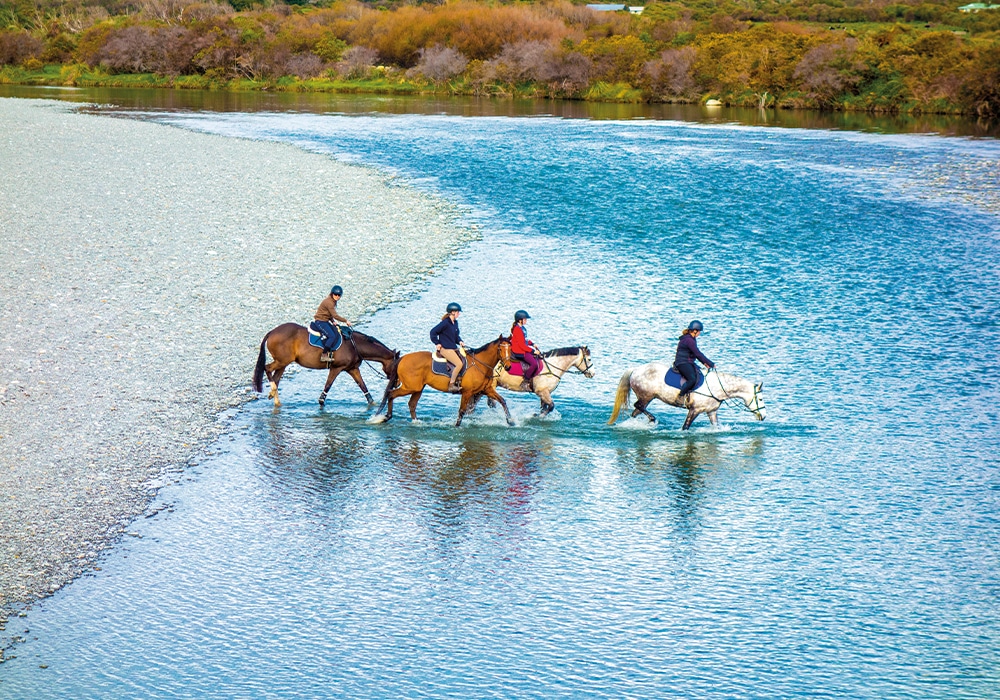This tiny town may no longer be the source of gold, but Ross is rich in stories, native bush and 150 years of fascinating history. Paul Owen takes a closer look.
Ross, 31km south of Hokitika on the West Coast of the South Island, is today a tiny town with around 400 residents. However, rewind 150 years, and you’ll find Ross a hive of furious activity as 4000 miners scour the surrounding soil for that most elusive and precious metal – gold.
A few will strike it lucky in the initial rush during the 1860s to the alluvial silt of the adjacent Totara riverbed, but a realisation will quickly descend on the tent city of nomadic Irish, Māori, English, Scottish and Chinese miners that the easily won gold is running out. They dig deeper into the river flats nearby and find rich veins of the lustrous element but the joy of finding them is short-lived. They’re located at depths that make it impossible for small teams of miners to get rich. Extracting this gold will require much capital investment in steam- and horse-powered machinery and a highly organised workforce.
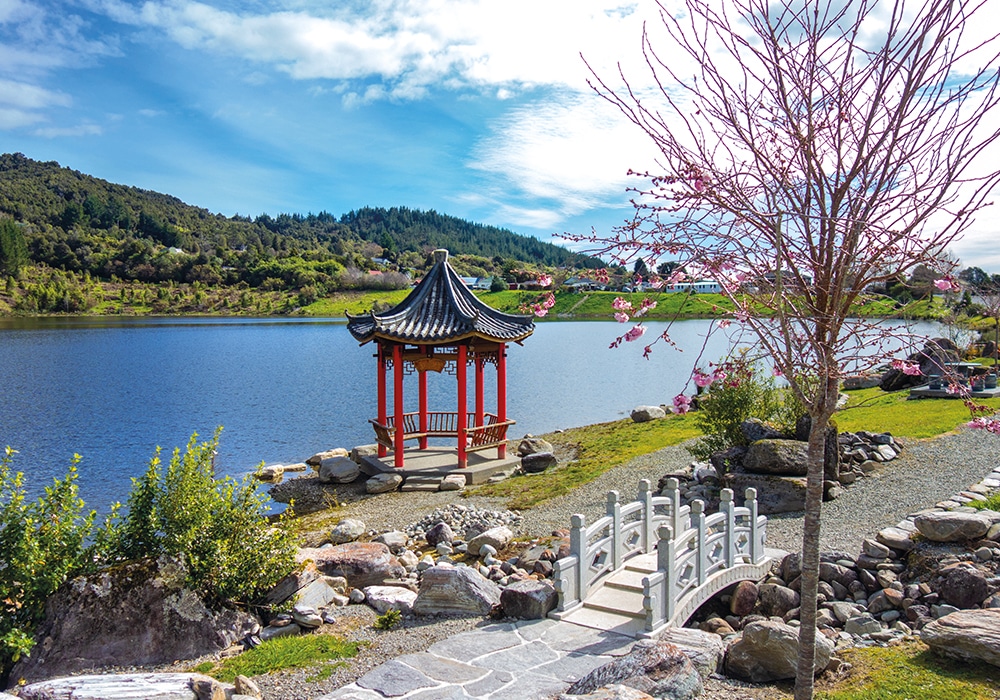
Underground mining is a practice that’s best left to companies to perform. Cue lots of construction, both below and above ground as the town of Ross began to take form. It was initially named Georgetown, but the name was changed to Rosstown in 1865 in honour of George Ross, then the provincial treasurer of Canterbury. The town’s hard-working, hard-living inhabitants, always keen to rid themselves of unnecessary syllables, soon shortened the name to Ross. Presumably, it was easier to pronounce without slurring after a night at one of the town’s pick of pubs. And Ross boasted some excellent pubs. There’s the Empire Hotel, the Dunedin Hotel, the ambitiously named City Hotel, the Junction Hotel and quite a few more. The Bank of New South Wales took root to deal with company pay rolls and assay the occasionally spectacular find of a small-claim miner. When a pair of the latter, Messers Scott and Sharpe, found a solid 3.09kg lump of gold in 1909 in the hills above Ross it was recorded as the largest gold nugget ever found in New Zealand. The pair named the nugget, the Honourable Roddy, after the then minister of mines, Roderick McKenzie, and received 400 pounds for it.
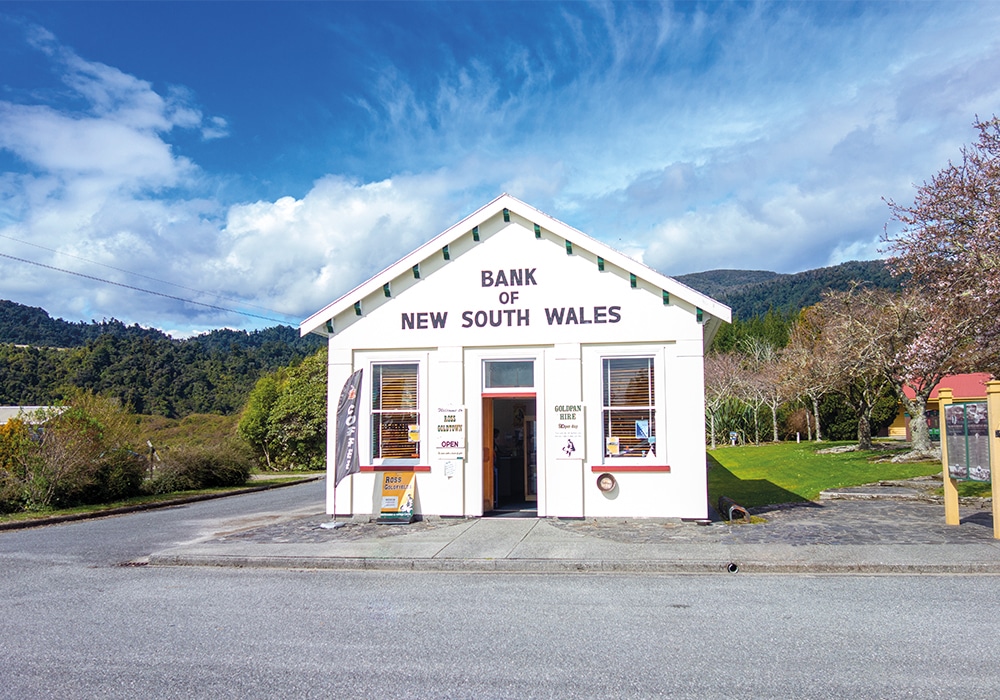
You can view a replica of the Honourable Roddy today at the Ross Goldfields Information and Heritage Centre located behind the Bank of New South Wales on Alymer Street, where you can also pan for gold. Just turn off SH6 onto that street, and you’ll find yourself surrounded by rustic buildings that recall the 1864–1918 era of the peak of the town’s population. There’s also the one surviving hotel, the Empire, and the single church that Ross managed to attract – an appropriately Catholic one to absolve the sins of the large number of Irish miners who settled in the town.
Family Histories
The First World War and the veins of gold running out put an end to the era of underground mining at Ross, and a slow decline in the population of the town began. In 1918, the ministry of mines recorded a nil gold return from Ross. A factor was the number of miners who never returned from the war, who are remembered by a large memorial outside the town hall on SH6. The deaths of these men were preceded by those from Ross who lost their lives in the Second Boer War, and there’s a separate memorial remembering their sacrifice alongside. It’s a measure of the town’s contribution to various wars of the British Empire that there’s not only these two memorials to be found in the streets of Ross. Another commemorates the falling of Robert Hunt Currie at Gallipoli, while a large oak tree with a plaque remembers Victoria Cross winner, Samuel Mitchell.
Mitchell survived the war but drowned at age 52, near Ross while attempting to cross the flooded Mikonui River to the south of the town. He had won his VC during the Battle of Gate Pa (Tauranga) for carrying his mortally wounded commander out of the fray under heavy fire. It was awarded to him in Australia, and he left his medal along with other belongings in a Sydney boarding house after he was discharged from the British Navy and moved to Ross to seek his fortune. When he settled in the town, he then sent for his property and found that the boarding house had somehow lost all of it. Mitchell’s Victoria Cross would not surface again until it appeared at an auction in London in 1912, 18 years after his death. With the assistance of the Duke of York it was returned to Mitchell’s surviving family – he had fathered ten children in Ross with wife, Agnes. It is now on display in the Hokitika Museum.
You’ll find many colourful Ross family histories etched into the gravestones located at the cemetery high above the town on St. James Street. It’s a steep climb that’s worth doing just for the view it affords of the Totara River catchment, with the town in the foreground framed by mountains and coast all the way to Greymouth and beyond. Some are tragic and poignant memorials like the one erected by a grieving wife and mother to her husband and three of her sons who all died within a period of five years. ‘So Loved, So Mourned’ reads the inscription.
Meanwhile, hats off to the multiple descendants of Edmund Case who recently erected a stone to remember their gold rush ancestor, scribed with ‘Died in Despair, but all was not lost Edmund’. From the cemetery you can loop your way back to the town by strolling along the Ross Water Race Walkway. This one hour walk takes you through regenerating native bush past the many structures and constructions of the Victorian and Edwardian eras of corporate gold mining at Ross. Marvel at the dams, tunnels and races used to gravity feed the gold sluices with highly pressurised water, and some of the little tin shacks that were homes for the miners, the appreciation of their industry juxtaposed by restful native bird song. The track returns to Alymer Street and two beautifully restored historic structures – the old police gaolhouse circa 1915 and De Bakkers cottage, typical of Ross housing during the 19th century. Both fully furnished, you can wander through and really get a feel of life in the town over a century ago.
Gold fever returned to Ross in the 1990s when a huge open cast pit was carved into the eastern side of the town. This quickly extracted all the remaining gold not yet unearthed by underground mining and has now been transformed into a large lagoon. On the northern side a Chinese-style garden is being constructed to remember the miners from Asia who came to seek their fortunes in Ross. Meanwhile, DOC is expanding its network of tracks into the native forest areas of the Totara Valley.
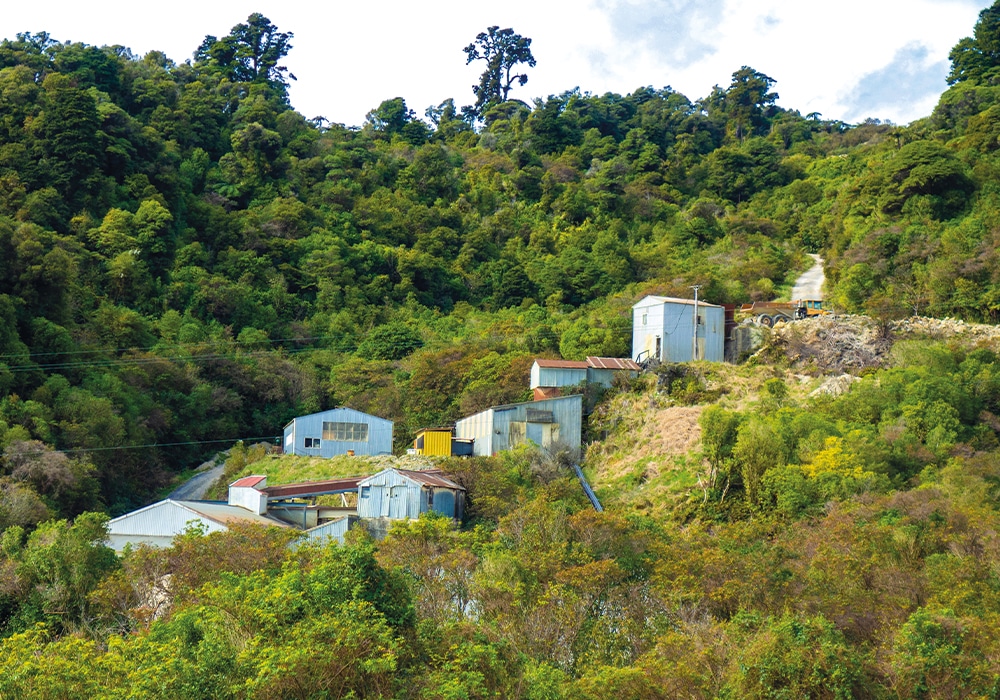
Now that Ross is linked to Greymouth by the Wilderness Cycle Trail, a new kind of economy is being mined there – tourism. So, what’s it like to live in Ross in the 21st century, surrounded by all the memorabilia of the past 150 years? Ask Roger Chapman, a.k.a. Chappy, the greenstone, wood, and whalebone carver who lives in the last house at the southern edge of the town. He moved to Ross after becoming disillusioned with the over-commercialisation of the greenstone industry in Hokitika.
“When I moved here from Hokitika everything felt just right to me – it was like this house folded its arms around me,” he told me. Born with a gift to see finished carvings within pieces of stone, bone and other materials, Chappy has built quite a following, including amongst Māori with speaking rights at maraes who view the taonga he carves for them as projections of their mana.
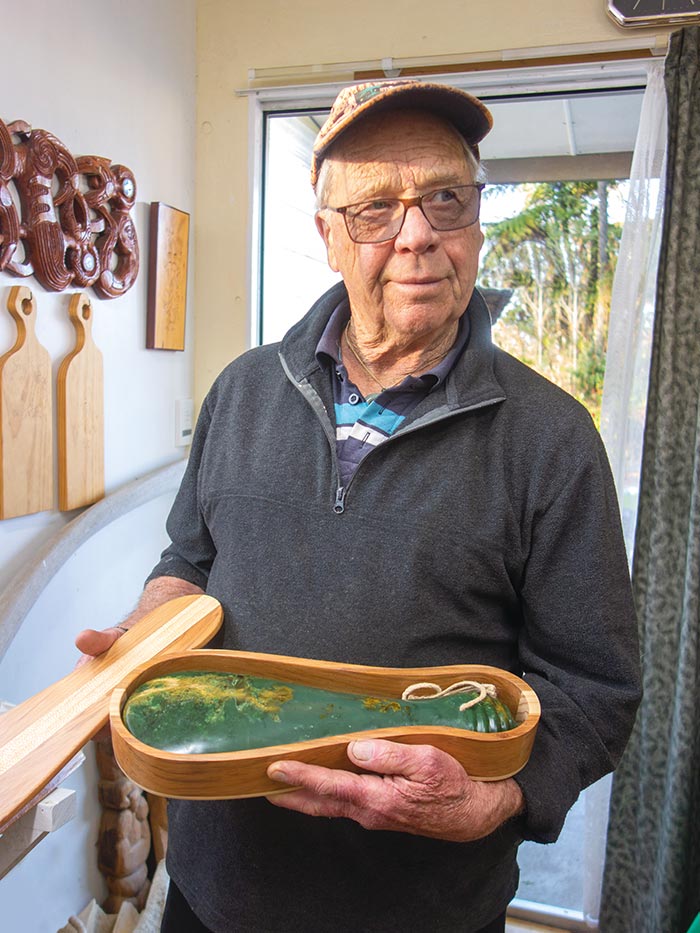
For Chappy, the secret is in ‘letting the greenstone find you’. “I prefer to allow a customer to become attached to what I’m about to carve for them. If it’s something from a whale’s tooth, I’ll give them two whale’s teeth to hold for a few minutes to find out which one is best for them. “After a few minutes, they’ll say ‘use this one – it feels warmer than the other.’” A recent work by Chappy is the carving of a Mere from a gorgeous ‘flowered’ piece of greenstone, complete with a Rimu presentation box. Sometimes it’s amazing what treasures you find in a town as tiny as Ross.

